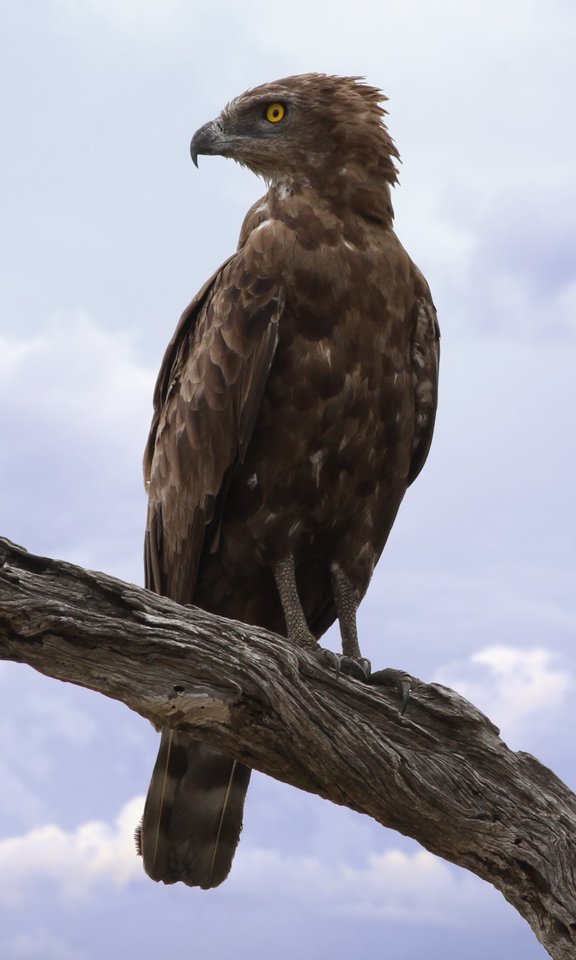Brown snake eagles, also known as short-toed snake eagles, have unique sleeping habits that are adapted to their lifestyle as birds of prey. These eagles primarily sleep while perched on tree branches, with their heads tucked into their feathers for warmth and protection. This posture allows them to remain alert and ready to take flight at a moment’s notice, which is crucial for their survival as predators.
Sleeping Posture of Brown Snake Eagles
When brown snake eagles sleep, they typically adopt a specific posture that allows them to remain partially alert. Here’s a closer look at their sleeping posture:
-
Perched on Tree Branches: Brown snake eagles prefer to sleep while perched on tree branches, rather than on the ground or in nests. This elevated position provides them with a better vantage point to survey their surroundings and detect potential threats or prey.
-
Head Tucked into Feathers: During sleep, brown snake eagles tuck their heads into their feathers, which helps to conserve body heat and protect their vulnerable head and neck areas.
-
Partially Alert: These eagles are known for their ability to sleep with one eye open, a phenomenon known as unihemispheric sleep. This allows them to remain partially alert and responsive to their environment, even while sleeping.
Sleeping Patterns of Brown Snake Eagles
 Image source: Brown snake eagle By Derek Keats
Image source: Brown snake eagle By Derek Keats
Brown snake eagles have a unique sleeping pattern that is adapted to their lifestyle as predators. Here’s a closer look at their sleeping habits:
-
Sleep Duration: Brown snake eagles typically sleep for 10-12 hours per day, although they do not sleep on a continuous stretch as humans do. Instead, they take frequent short naps throughout the day and night, allowing them to remain alert and responsive to their environment.
-
Breeding Season Sleeping: During the breeding season, both parents sleep in close proximity to the nest, which is typically located in a tree. The female arranges the nest regularly and adds green sticks during the breeding period. After hatching, the young fledge after about 68-70 days, at which point the parents may continue to sleep near the nest or find a new location.
-
Unihemispheric Sleep: As mentioned earlier, brown snake eagles are known for their ability to sleep with one eye open, a phenomenon known as unihemispheric sleep. This allows them to remain partially alert while sleeping, which is particularly important for birds of prey that need to be ready to hunt at a moment’s notice.
Factors Influencing Brown Snake Eagles’ Sleeping Habits
Several factors can influence the sleeping habits of brown snake eagles, including:
-
Predation Risk: As birds of prey, brown snake eagles face a constant threat of predation from larger predators. Their ability to remain partially alert while sleeping helps them to quickly respond to any potential threats.
-
Hunting Strategies: Brown snake eagles are skilled hunters, and their sleeping habits are adapted to support their hunting strategies. By taking frequent short naps, they can remain alert and responsive to their environment, allowing them to quickly detect and pursue prey.
-
Environmental Conditions: The weather and other environmental factors can also influence the sleeping habits of brown snake eagles. For example, they may adjust their sleeping patterns to accommodate changes in temperature, precipitation, or the availability of suitable perching sites.
Conclusion
In conclusion, the sleeping habits of brown snake eagles are a fascinating adaptation to their lifestyle as birds of prey. By sleeping while perched on tree branches, with their heads tucked into their feathers, these eagles are able to remain partially alert and responsive to their environment, which is crucial for their survival. Their unique sleeping patterns, including their ability to sleep with one eye open, allow them to balance the need for rest with the need to be ready to hunt at a moment’s notice.
Reference:
– Brown Snake Eagle – Circaetus gallicus
– Unihemispheric sleep in birds
– Breeding biology of the Short-toed Snake Eagle Circaetus gallicus in northeastern Spain

